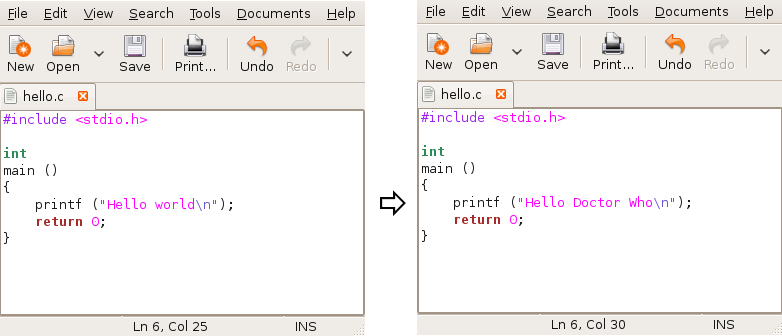Help with Patch Files
Example Patch File
Here is an example patch file (aka "diff" or "patch"):
Index: tmp/hello.c
===================================================================
--- tmp.orig/hello.c 2009-04-22 09:59:28.707583382 -0600
+++ tmp/hello.c 2009-04-22 10:00:06.432872620 -0600
@@ -3,6 +3,6 @@
int
main ()
{
- printf ("Hello world\n");
+ printf ("Hello Doctor Who\n");
return 0;
}
The patch file indicates to perform the instructions shown in the following figure:

Syntax of a Patch File
Patch files are divided in two parts: (1) headers, and (2) hunks. The header forms the first few lines, and the hunk starts with an "@@" symbol. Here is how to interpret a diff file:
In the header, if the line starts with:
"---"
This specifies the original file name (prior to being patched). Usually, this filename is ignored. The space between the filename and optional timestamp is supposed to be a tab character ("t").
"+++"
This is the new file name that is going to be patched. The space between the filename and optional timestamp is supposed to be a tab character ("\t").
In the hunk (delimited by "@@"), if the line starts with:
" " (just a single space character)
This is called a "context line". It doesn't result in any operation happening. But it does help you figure out how to locate other lines where operations do happen.
"-"
This is a delete operation. The line indiciated by the "-" is to be removed.
"+"
This is an insert operation. The line indiciated by the "+" is to be inserted.